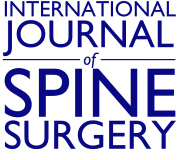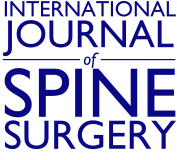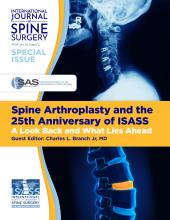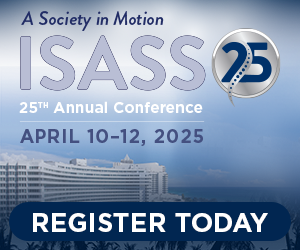Abstract
Background Lateral lumbar interbody fusion (LLIF) is commonly used to address various lumbar pathologies. LLIF using the prone transpsoas (PTP) approach has several potential advantages, allowing simultaneous access to the anterior and posterior columns of the spine. The aim of this study was to report the 1-year outcomes of LLIF via PTP.
Methods This is a retrospective review of 97 consecutive patients who underwent LLIF via PTP. Radiographic parameters, including lumbar-lordosis, segmental-lordosis, anterior disc height, and posterior disc height, were measured on preoperative, initial-postoperative, and 1-year postoperative imaging. Patient-reported outcomes measures, including Oswestry Disability Index, visual analog scale (VAS), pain EQ5D, and postoperative complications, were reviewed.
Results Ninety-seven consecutive patients underwent 161 levels of LLIF. Fifty-seven percent underwent 1-level LLIF, 30% 2-level LLIF, 6% 3-level LLIF, and 7% 4-level LLIF. The most common level was L4 to L5 (35%), followed by L3 to L4 (33%), L2 to L3 (21%), and L1 to L2 (11%). Significant improvements were noted at initial and 1-year postoperative periods in lumbar-lordosis (2° ± 10°, P = 0.049; 3° ± 9°, P = 0.005), segmental-lordosis (6° ± 5°, P < 0.001; 5° ± 5°, P < 0.001), anterior disc height (8 mm ± 4 mm, P < 0.001; 7 mm ± 4 mm, P < 0.001), and posterior disc height (3 mm ± 2 mm, P < 0.001; 3 mm ± 2 mm, P < 0.001). Significant improvements were seen in Oswestry Disability Index at 6 weeks (P = 0.002), 6 months (P < 0.001), and 1 year (P < 0.001) postoperatively; pain EQ5D at 6 weeks (P < 0.001), 6 months (P < 0.001), and 1 year (P < 0.001) postoperatively; and leg and back visual analog scale at 2 weeks (P < 0.001), 6 months (P < 0.001), and 1 year (P < 0.001) postoperatively. The average length of stay was 2.5 days, and the most common complications were ipsilateral hip flexor pain (46%), weakness (59%), and contralateral hip flexor pain (29%).
Conclusion PTP is a novel way of performing LLIF. These 1-year data support that PTP is an effective, safe, and viable approach with similar patient-reported outcome measures and complications profiles as LLIF performed in the lateral decubitus position.
Level of Evidence 4.
- lumbar stenosis
- interbody fusion
- prone-transpsoas
- lateral
- transpsoas
- single-position surgery
- lumbar plexus
Footnotes
Funding No funding was received for this study.
Declaration of Conflicting Interests Dr. Singh is a consultant for AlphaTec, Stryker, and Spinewave. Dr. Moss is a consultant for AlphaTec, Stryker, Biederman, and Spinewave, and he receives royalties from AlphaTec, stock ownership in Spinal Simplicity, and Orthozon. Dr. Mallozzi is a consultant for AlphaTec and Spinewave.
- This manuscript is generously published free of charge by ISASS, the International Society for the Advancement of Spine Surgery. Copyright © 2024 ISASS. To see more or order reprints or permissions, see http://ijssurgery.com.







